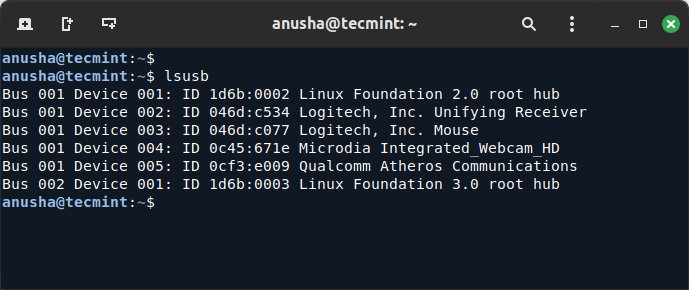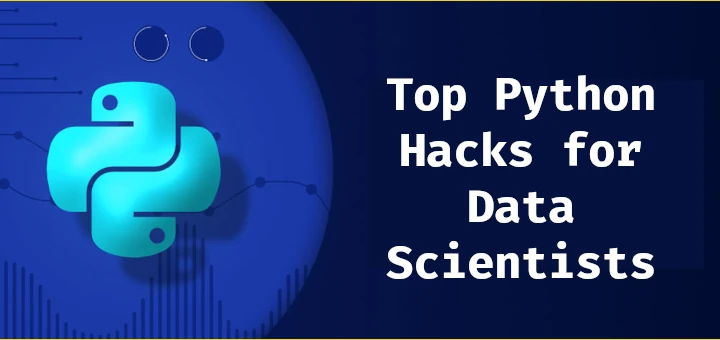There’s no doubt that Skype was once one of the most popular instant messaging and video calling applications out there. Whether it was keeping in touch with friends and family or having conversations with clients and team members, Skype was a widely used tool.
However, times have changed, and Microsoft has largely discontinued active development of Skype, with the platform losing significant market share to newer, more feature-rich alternatives. While Skype still exists, it’s no longer the go-to communication tool it once was.
You might also like:
Not everyone fancied Skype even in its heyday, and today, users have access to far better applications. In this guide, we feature some of the widely used Skype alternatives for Linux desktops that have taken its place.
1. Jitsi Meet – Free Video Conferencing Solutions
Jitsi Meet is a secure and flexible video conferencing solution that allows you to keep in touch with your family, friends, and colleagues.
It’s fully encrypted, so you don’t need to worry about intruders eavesdropping on your conversations. In addition, it is completely free to use and definitely open source.
With Jitsi, you can make video calls all day for free without even needing to create an account.
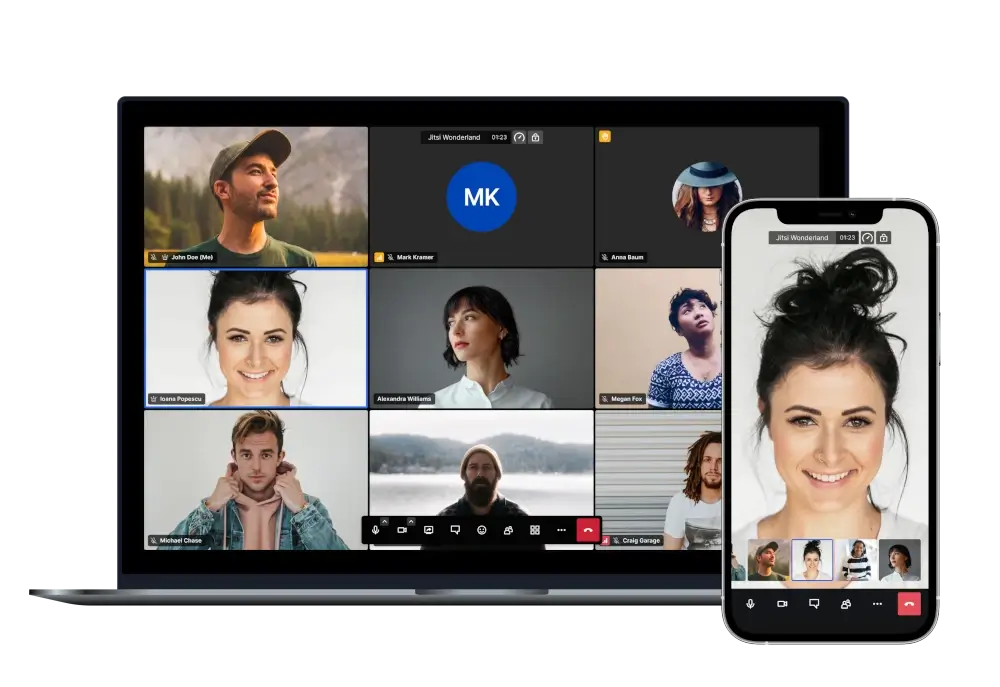
Jitsi key features include:
- End-to-end encryption.
- High Definition Video and Audio.
- Advanced video routing for bandwidth estimations, scalable video coding, and many others.
- Integrated chat with emojis that you can use while video conferencing.
- Ability to have multiple participants sharing the desktop screen simultaneously.
- Unlimited free ‘meets’ for up to a maximum of 100 participants at a session.
- Browser-based access with no downloads required.
2. Discord – Free Voice, Video, and Messaging App
Originally built to provide a vibrant community for gamers, Discord is a cross-platform VoIP and group-chatting application that, since its inception in 2015, has branched out to include users from all over the world, including artists, writers, developers, and educators.
Just like video conferencing apps such as Zoom, Discord boomed in popularity during the pandemic as the world saw a rise in demand for online work, gaming, and social interaction. To date, the application has more than 200 million monthly active users.
Discord is organized into communities, each referred to as a ‘Server‘, and each server comprises various text channels (where you chat with users) and voice channels (here, you can initiate voice and video calls). You can do lots of other things, such as sharing images and videos, music, links, and so on.
In summary, each ‘Server‘ is made up of multiple channels, each dedicated to a specific topic, much like Slack. You can start your own server absolutely free of charge, or simply join other servers.
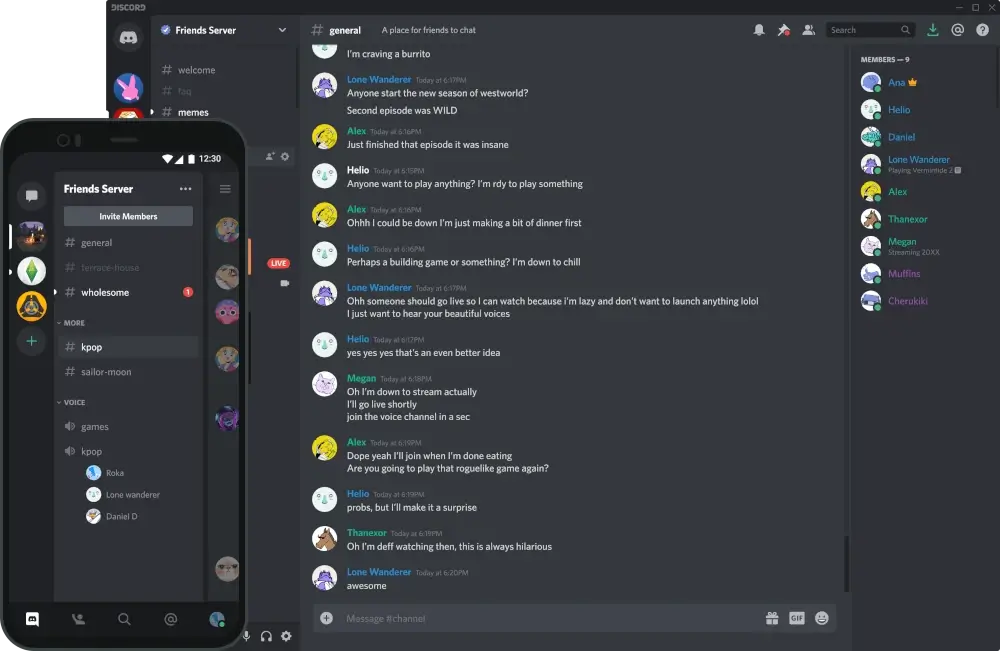
Discord’s notable features include:
- High-quality voice and video calling.
- Screen sharing and streaming up to 4K resolution.
- Server discovery and community building.
- Channel organization for structured conversations.
- Video backgrounds and noise suppression.
- Rich media sharing, including images, videos, and links.
- Custom emojis and an extensive bot ecosystem.
3. Google Meet (formerly Google Hangouts)
Google Meet is a video calling and instant messaging app in the Google suite of applications, which is a free and cross-platform application that can be installed on Linux, Mac, and Windows or simply accessed from a web browser.
Google Meet adds some oomph to conversations with live captions, virtual backgrounds, and free video calls that seamlessly integrate with your Google Calendar and Gmail.
NOTE: Google Hangouts has been fully retired and replaced by Google Meet, which is now the de facto instant messaging and video calling app for Google. All conversations were migrated to Meet when Hangouts was phased out.
Google Meet key features include:
- High-definition video calling with up to 100 participants on free plans.
- Live captions and AI-powered transcriptions.
- Background blur and virtual backgrounds.
- Screen sharing and collaborative tools.
- Integration with Google Calendar and Gmail for easy scheduling.
- Syncing across all devices and keeping tabs on your conversations on the go.
- Meeting recordings with Google Workspace.
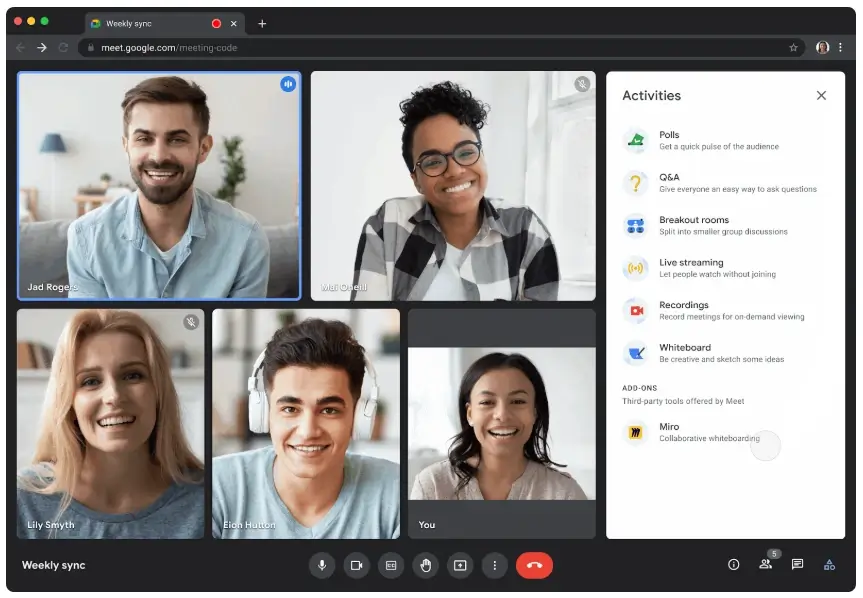
4. WhatsApp / WhatsApp Web
WhatsApp is the most popular social messaging application on the planet with over 2.7 billion active users as of now. It’s no wonder that many people opt to use WhatsApp as their primary communication channel.
WhatsApp is an end-to-end encrypted instant messaging and VoIP application that allows you to chat with users and make HD voice and video calls. You can make your chats more exciting by using emojis, GIFs, and sharing photos and videos.
WhatsApp also allows you to create groups and have group chats with other members of the group. It also has some nifty features, such as creating temporary status updates that disappear after 24 hours and organizing communities for multiple related groups.
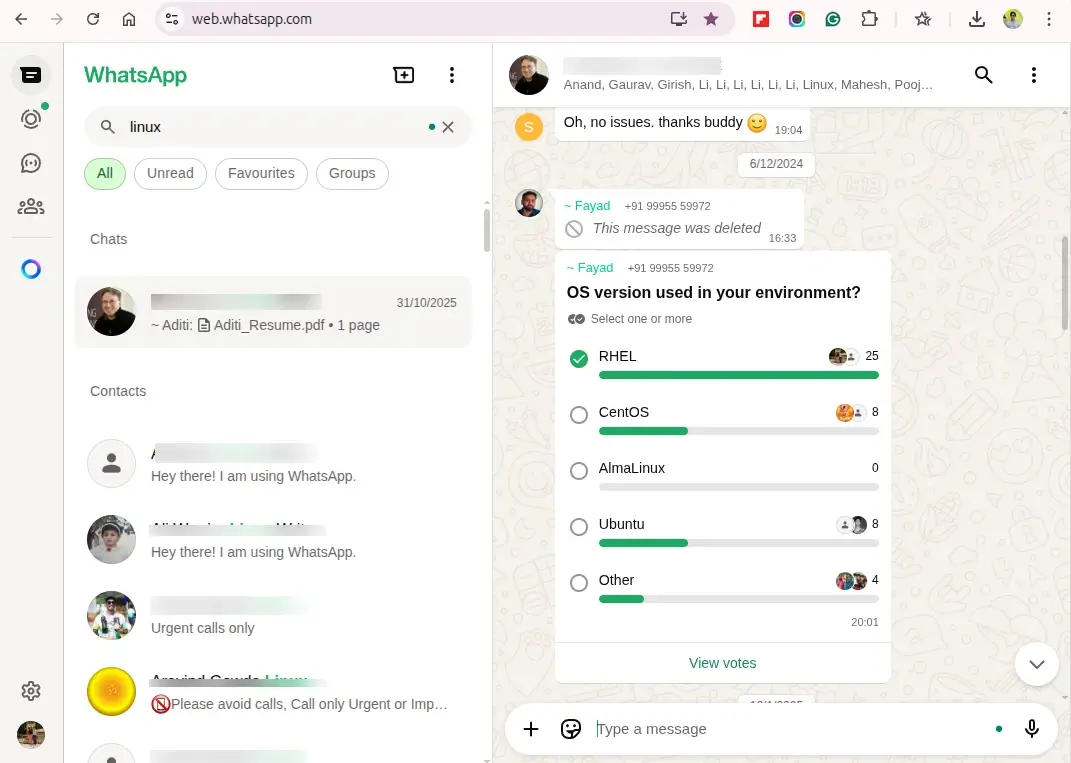
WhatsApp key features include:
- End-to-end encryption for all communications.
- Voice and video calling with high-definition quality.
- Group chats with up to 1,024 participants.
- File sharing, including documents, photos, and videos.
- Status updates that disappear after 24 hours.
- WhatsApp Communities for organizing multiple groups.
- Voice messages and document sharing.
- Cross-platform availability across desktop and mobile devices.
5. Slack – AI Work Management & Productivity Tools
Slack is a proprietary software platform developed by Slack Technologies that provides an easier and more organized way to work and collaborate on projects.
Slack is made up of channels which are basically workspaces where you can join and have conversations on a project at hand. Channels provide an invaluable way of discussing day-to-day projects in a more efficient manner than over email.
Unlike email, it allows you to have real-time conversations with team members. You can easily grab someone’s attention using the @ symbol when you need a quick response. You can attach images and emojis, record video and audio clips, and so much more.
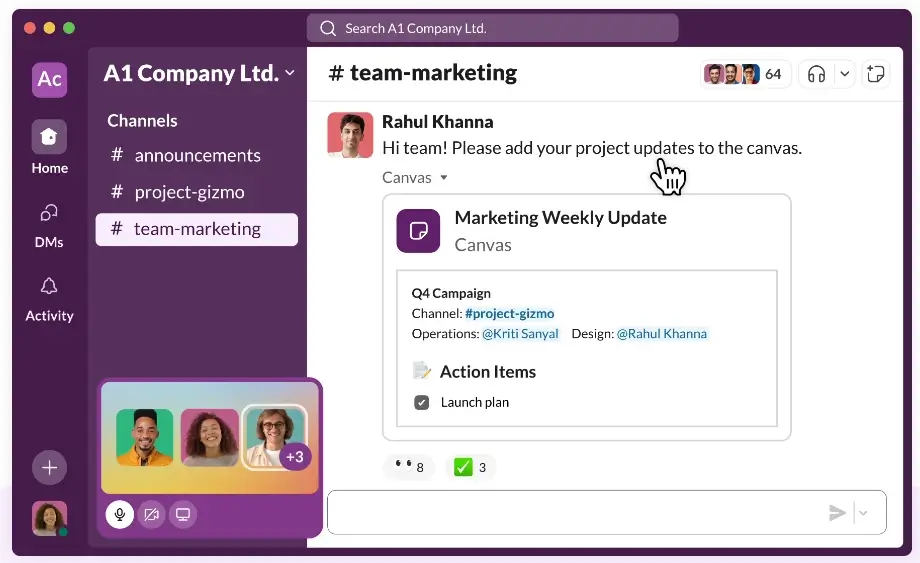
Slack’s notable features include:
- Organized channels for topic-specific discussions.
- Direct messaging and group conversations.
- Voice and video calls with screen sharing.
- Huddles for quick audio conversations.
- Extensive app integrations with over 2,400 apps.
- File sharing and powerful search across all conversations.
- Workflow automation with Slack’s Workflow Builder.
- Canvas documents for collaborative note-taking.
6. Zoom – Cloud-based Video Conferencing Platform
Zoom has become one of the most recognizable names in video conferencing, especially for professional meetings, online classes, and virtual events. With reliable performance and robust features, it’s a top choice for Linux users who need dependable video calling.
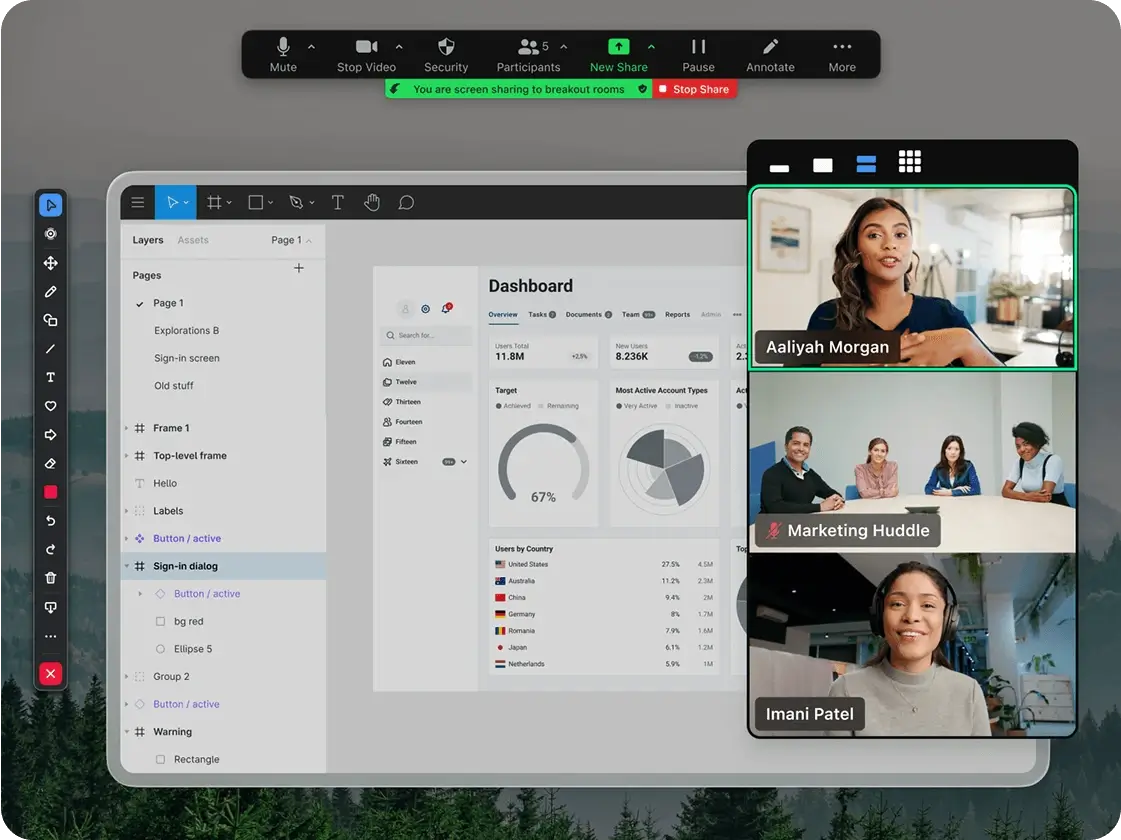
Zoom key features include:
- Video calls with up to 100 participants on free plans.
- 40-minute limit on free group meetings.
- Screen sharing with annotation tools.
- Virtual backgrounds and video filters.
- Breakout rooms for small group discussions.
- Meeting recordings to local or cloud storage.
- Webinar hosting capabilities.
- Waiting rooms and comprehensive security controls.
7. Signal – Encrypted Messaging App
For users who prioritize privacy above all else, Signal offers the most secure messaging and calling experience available. Endorsed by privacy advocates and security experts worldwide, Signal provides military-grade encryption without sacrificing ease of use.
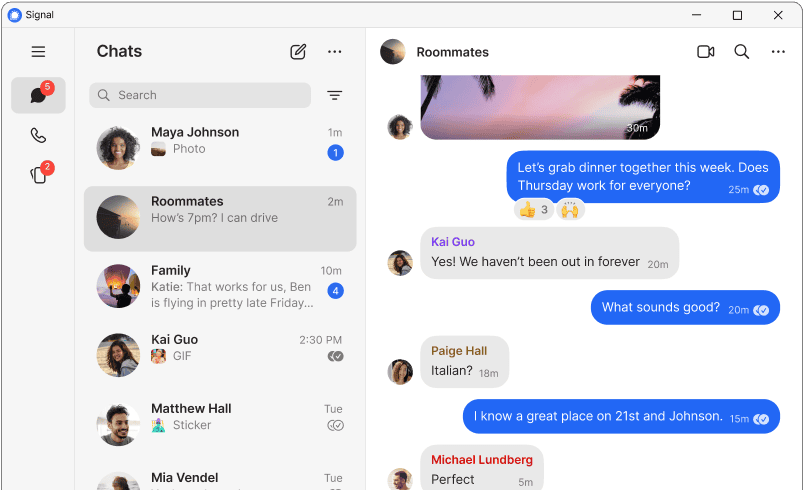
Signal key features include:
- End-to-end encryption for all communications.
- Voice and video calls with HD quality.
- Disappearing messages with customizable timers.
- Group calls with up to 40 participants.
- Screen sharing capabilities.
- No ads or trackers whatsoever.
- Open-source and independently audited code.
- Cross-platform with full desktop Linux support.
Special Mentions
Other worthy contenders include:
- Element (Matrix) – Decentralized, open-source messaging with federation.
- Telegram – Cloud-based messaging with support for massive groups.
- Microsoft Teams – Enterprise collaboration platform.
- Viber – Popular messaging app with calling features.
- Webex Meetings by Cisco – Professional video conferencing.
- Mumble – Low-latency voice chat ideal for gaming.
Conclusion
Granted, there are several instant messaging and VoIP applications out there that you can use to stay in touch with your family and friends. With Skype no longer the dominant force it once was, these alternatives have stepped up to fill the void with better features, enhanced security, and improved user experiences.
We have highlighted seven commonly used applications that serve as excellent Skype alternatives, going by their good reviews, robust features, and active user bases. Whether you prioritize privacy, collaboration, community building, or simply staying connected, there’s an option on this list perfectly suited to your needs on Linux.



